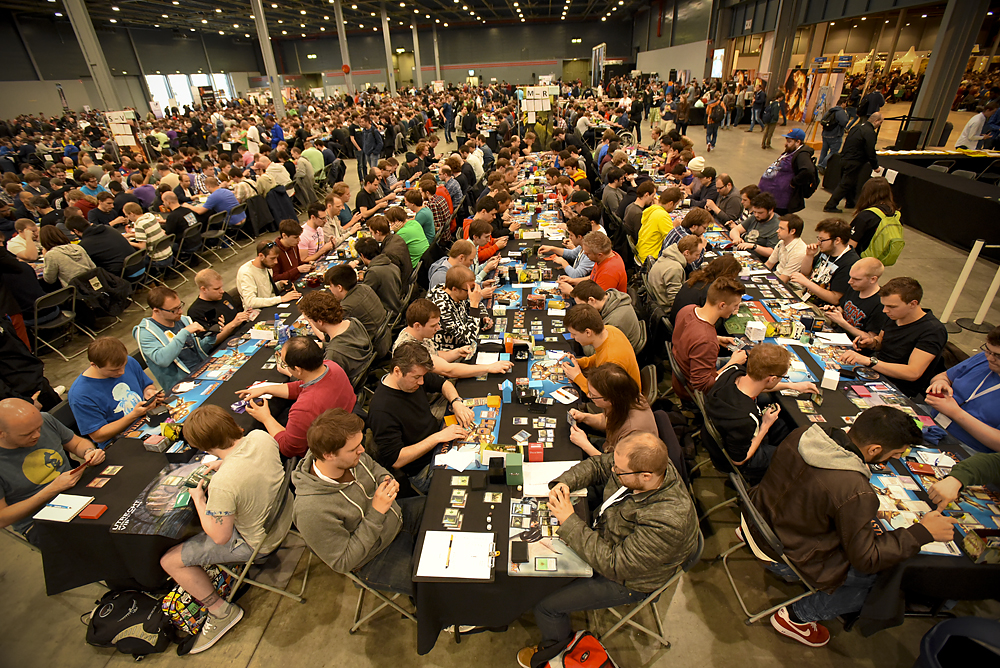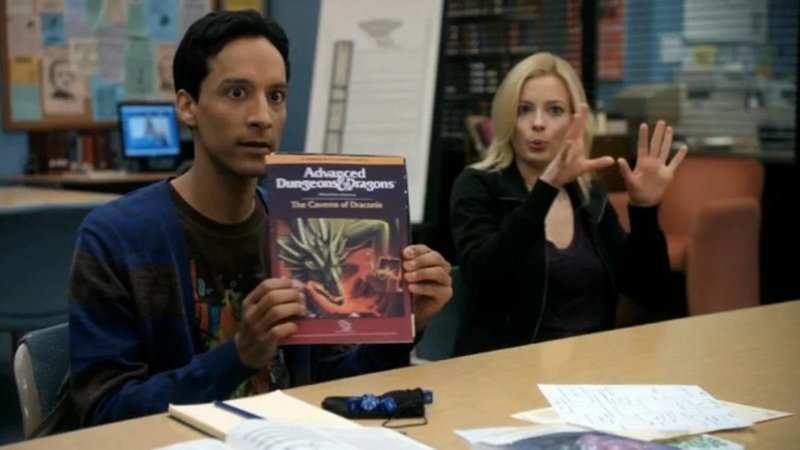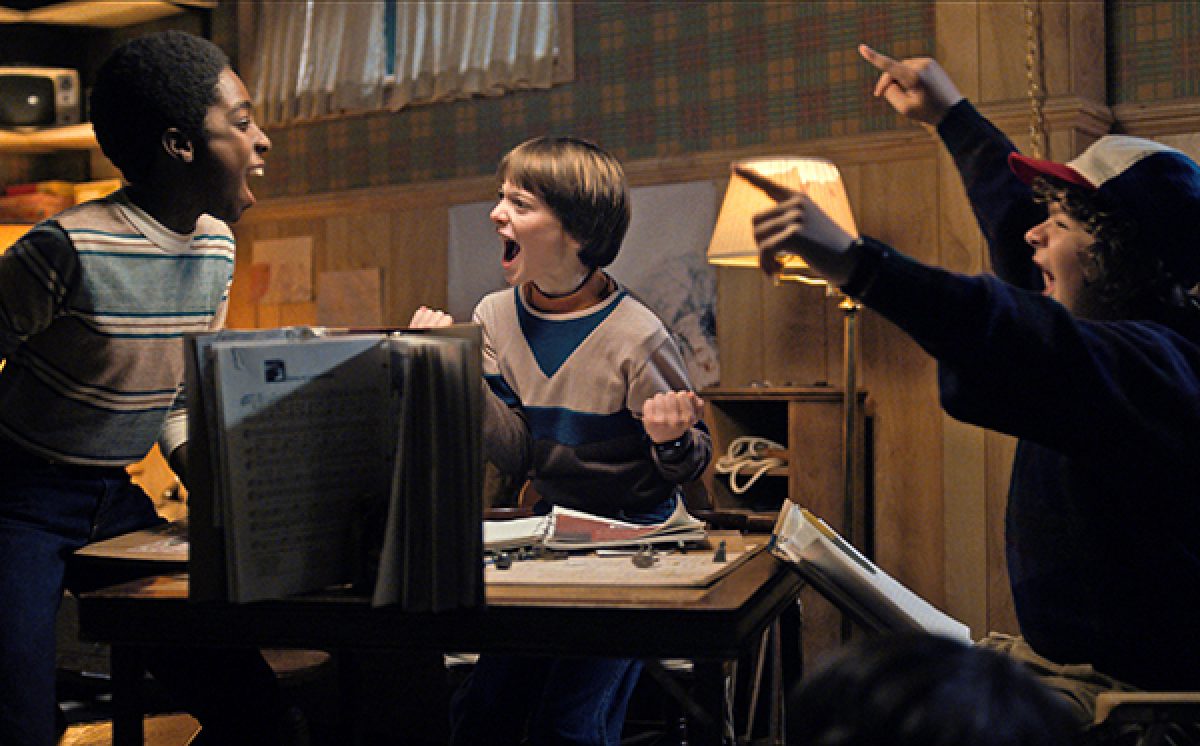With the release of A24’s board game adaptation of David Lowery’s upcoming film The Green Knight, we take a look at the iconic Role Playing Game Dungeons and Dragons and its beloved place in popular culture.

A24 have always been savvy with their merchandising. So when they released not a shirt, or a hat, but a board game, I was immediately intrigued. The game follows the events of the film, seeing players seeking out the eponymous Green Knight and regaining their honour. One player takes the role of Game Master, talking them through a series of events that allow them to choose their own adventure.
This isn’t just a publicity event, though. Designed in concert with veteran Timm Woods, it’s a fully rounded (if short) game system, containing possible spinoff ideas for campaigns set in the worlds of other A24 titles like The Lighthouse, Midsommar and Uncut Gems.
Savvy gamers among you might be thinking that this sounds a lot like another game. And you’d be right.

While the trailers for The Green Knight show a fantasy film that is very modern and eerie, the aesthetic of the game is aggressively 80s.
So why have they made this game? There are a few theories. The first is that it’s a consolation for fans who were disappointed to learn of its delayed release due to COVID-19. Role-Playing Games (RPGs) have surged in popularity in recent months, with many people playing games like Dungeons and Dragons over Zoom, Skype and so on. It’s also a fun way to experience the film’s themes in a new way.
As well as this, it’s more clever marketing by A24, who have clearly understood exactly what their fans are into. Where its parent systems feature endless rules, specialisations and actions, The Green Knight is a simplified experience, aimed at players new to the genre. By doing it this way, they’re acknowledging the surge in popularity for games like this.
Five Editions, Three Ages
‘D and D’ has been through many variations. Its first period of popularity was immediately after its release in 1974, when it became a stomping ground for any nerd worth their salt. Stigmatised by parents concerned about anything their kids were enjoying, as well as mainstream culture’s disdain for nerd and geek subcultures in general, it was a fringe game. Its main consumers were hardcore fantasy and sci-fi fans who recognised the scope of stories that it allowed them to be a part of.
Its popularity dropped off in the 90s and early 2000s with the dawning of the video game era. Many thought this would kill off tabletop gaming altogether. This was not aided in part by various editions of games like D and D, Warhammer or Magic: The Gathering that had become extremely arcane and needlessly inaccessible, prioritising overly complex rule-sets that were great when mastered, but very difficult to get into.
In the late 2000s and into the 2010s, many game systems sank. Those that learned to swim realised that the key was getting more people into the game itself. After all, more players means a better community, and more money for the company that owns the IP.

Flourishing
D and D has well and truly entered the mainstream in 2020. Its 5th edition, launched in 2014, is its most popular and successful yet. Hundreds of celebrities as famous as Vin Diesel or Stephen Colbert are avid supporters and players of the game, and it’s now a household name, especially among nerd subcultures.
This is due in part to its integration into popular TV shows. Where earlier this may have been played up for laughs, shows like Community represent the game as it actually is. In the episode “Advanced Dungeons and Dragons”, the characters play a game of D and D. Through the mechanics of the game, roleplaying and talking out decisions, it tells a larger story about human connection and bullying. Some shows like Stranger Things use it as a vector to kick off the narrative, and the charming way in which the kids play it in the first episode was instantly iconic.

Other shows like The Simpsons, The IT Crowd or Big Bang Theory also have sequences involving D and D. These scenes, however, are more to be laughed at than admired.
The D and D podcast market is also rapidly growing. Shows like Critical Role and D and D Is For Nerds have garnered huge amounts of subscribers online, proving that there’s a massive prospective audience out there for RPG content.
Now that it’s transcended its niche, nerdy origins, the game is enjoying an unrivalled era of popularity, and is helping to bring other game systems like it out into the light.

80s Nostalgia
An important part of this Green Knight game and how D and D is portrayed in modern media, especially in shows like Stranger Things, is the dynamic of 80s nostalgia. There’s been a massive increase in production quality and content. Despite this, the game has maintained a few relics from its admittedly goofy origins. Putting on bad accents, wearing silly costumes, or inventing characters with over-the-top names has always been a staple of the game – and it’s why many love it today.
But the particular aesthetic of a child wearing a felt cape and speaking in an unconvincing British accent, talking to an elf who exists only in the party’s collective imagination, is an intensely nostalgic one. Everyone who played D and D as a kid, or who grew up in or before the 80s, will recognise this image. They’ll probably also look at it fondly. When we see the box art for The Green Knight board game, we are transported back to playing these games as a child. Younger players will instead visit an imagined, nostalgia-saturated 1980s.

This is part of a broader cultural moment. 80s nostalgia has been huge throughout the 2010s and will no doubt continue to persist into the future. This is as true for cinema as it is for fashion, music or TV. And it’s not hard to see why. The 1980s was a period of great prosperity, of cheap gasoline, of the end of the Cold War. The optimism of the time led to some amazing, forward-thinking films and ideas. It also paved the way for the digital revolution soon to follow.
Hollywood is obsessed with keeping the 1980s alive in the modern day. Remakes of 80s classics, either directly or as ‘legacy sequels’ like Blade Runner: 2049 or Tron: Legacy, are endlessly common. Shows and films are set in this period all the time. It’s just modern enough to be relatable, but is still tied to an older world predating all the ills of the 21st century.
The Times They Are A’Changin’
When we talk about D and D now versus then, there are a few key differences in our culture that need to be looked at. After all, while it’s the same core game, everything around it has changed. Firstly, the internet has radically altered the way in which people learn the game. Most of the rules and materials can be found online. Where once a Dungeon Master would need to buy copious amounts of hefty rulebooks, campaign guides and character sheets, now all you need is one player with a laptop. This naturally has made the game a lot cheaper and easier to get into. This in turn has drawn a lot of new players.
But most importantly, it’s cool now. The stigma has died away as nerd culture has become more normalised. This is no doubt in part due to the nerdy teenagers of the 80s growing up and becoming powerful and influential (that’s my theory, anyway).
And Now It’s Merch
A24 are switched on. Capitalising on this wave of enthusiasm isn’t just a good business decision. It’s a way of tying in their latest film with a global movement of gamers. Whether there’s any actual crossover between game and film will be revealed when it premieres next year.
Subscribe to FIB’s Weekly Alchemy Report for your weekly dose of music, fashion and pop culture news!






